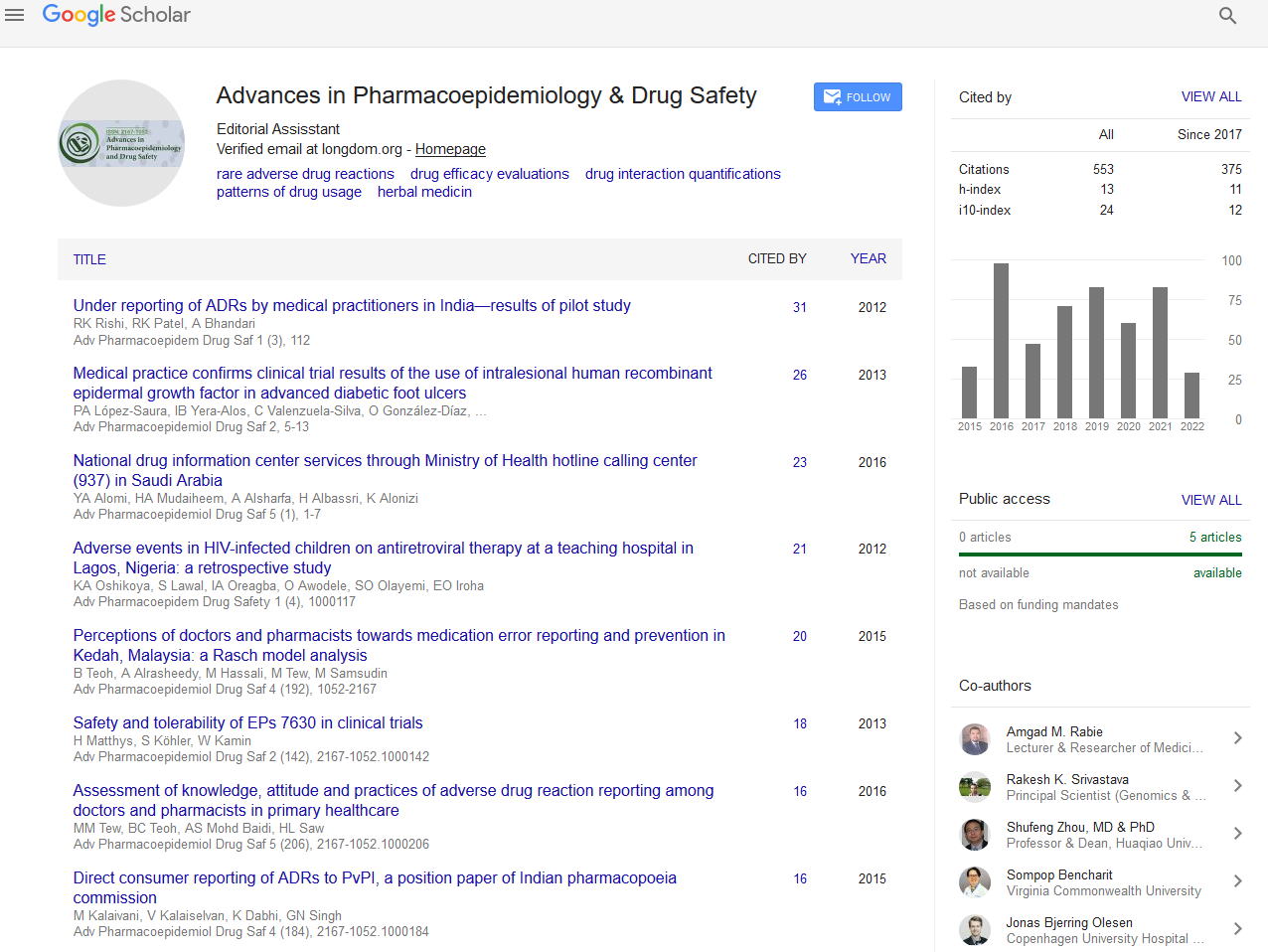Indexed In
- Open J Gate
- Genamics JournalSeek
- Academic Keys
- JournalTOCs
- RefSeek
- Hamdard University
- EBSCO A-Z
- SWB online catalog
- Publons
- Geneva Foundation for Medical Education and Research
- Euro Pub
- Google Scholar
Useful Links
Share This Page
Journal Flyer

Open Access Journals
- Agri and Aquaculture
- Biochemistry
- Bioinformatics & Systems Biology
- Business & Management
- Chemistry
- Clinical Sciences
- Engineering
- Food & Nutrition
- General Science
- Genetics & Molecular Biology
- Immunology & Microbiology
- Medical Sciences
- Neuroscience & Psychology
- Nursing & Health Care
- Pharmaceutical Sciences
Abstract
The Potential Effect of L-arginine on Mice Placenta
Mohanad A Al-Bayati, Marawan A Ahmad and Wael Khamas
L-arginine-nitric oxide pathway has emerged as novel regulators of several vital roles in the reproductive function which comprise pregnancy events, such as placental development. This study was done to pharmacologically enhance the performance of female reproductive system by using L-arginine powder as forerunner of nitric oxide. The study protocol consists of total number of 96 pregnant mice divided equally into two main groups (48 animals per group) and handled as follows: 1st Control group given normal saline orally daily and 2nd L-arginine dosed group 200 mg/kg BW 20% orally daily, both groups were randomly divided into four subgroup according to dosed period of pregnancy term, the dosed periods were 1-15 days, 7-15 days, 7-21 days and 15-21 days.
Several parameters were evaluated and displayed the following results: L-arginine concentration in uterine tissue was elevated in association with increased body, uterine, placenta and fetus weights. That presumably was controlled by an increase food and water intakes. Hormonal levels (estrogen and progesterone) mainly at 7-21 days and 15-21 days of gestation dosed periods. Those results showed histological and stereological profile which illustrated the activity and enlargement of placental layers acquaintance with increasing blood vessels (angiogenesis and vasodilation) and vascular density (%) especially in 7-21 and 15-21 of dosed gestation periods led to an increase placental volume and geometric parameters (cm), weight (gm) and proportional thickness (cm), vascular density, and blood vessels. Fetal traits parameters, displayed significant statistical values of fetuses and weights in all gestation periods expressed at 15-21 days as the best results. Also, increases other parameters: blood volume, steriometry values, histological assessments and alkaline phosphatase and lactogens values. The endpoints of this study presented the L-arginine donated NO which was capable of increasing remodeling blood supply and improvement of some reproductive phenotypic properties of animal models and significant number of fetuses viability.


